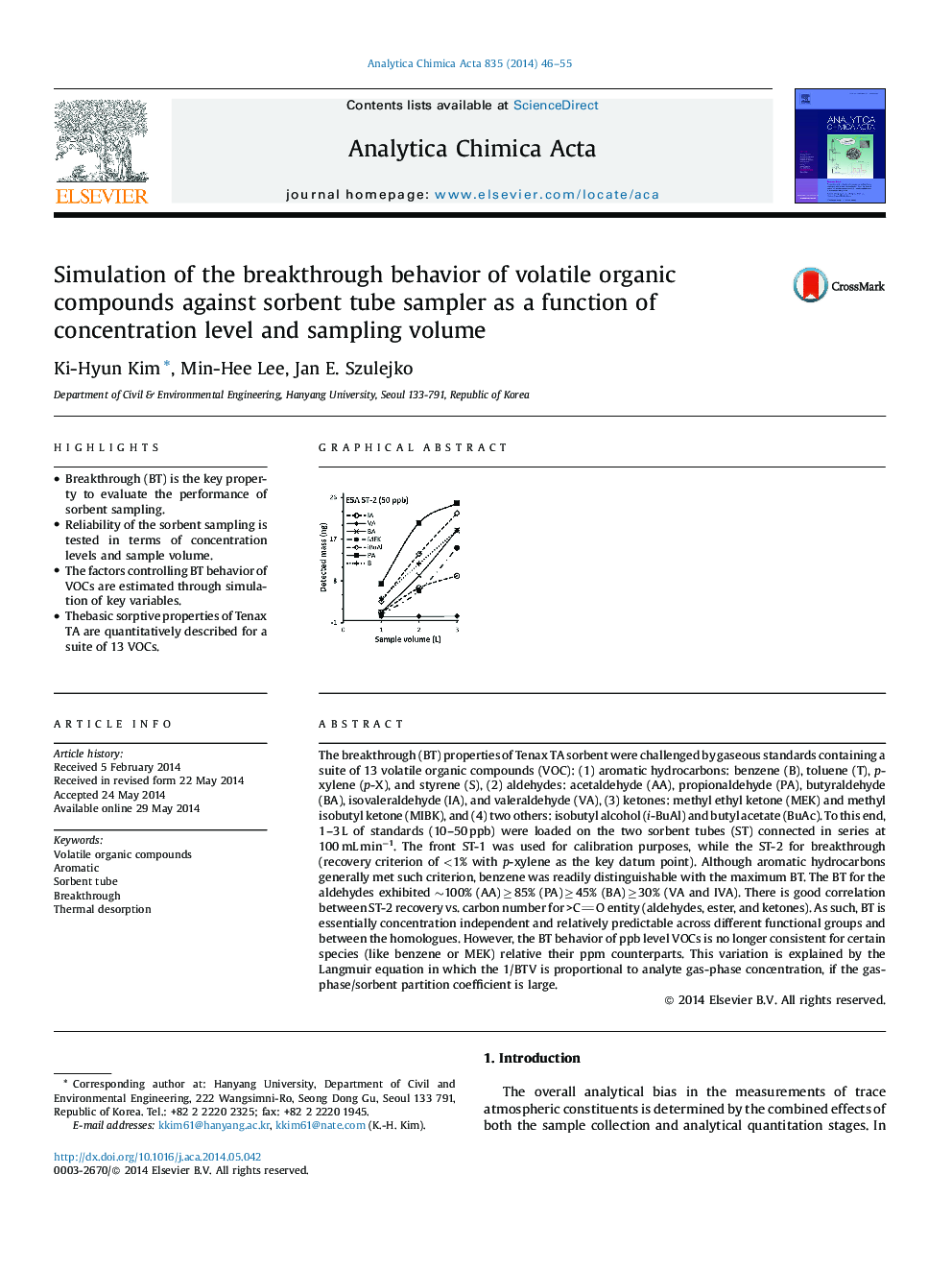| کد مقاله | کد نشریه | سال انتشار | مقاله انگلیسی | نسخه تمام متن |
|---|---|---|---|---|
| 1164514 | 1490997 | 2014 | 10 صفحه PDF | دانلود رایگان |
• Breakthrough (BT) is the key property to evaluate the performance of sorbent sampling.
• Reliability of the sorbent sampling is tested in terms of concentration levels and sample volume.
• The factors controlling BT behavior of VOCs are estimated through simulation of key variables.
• Thebasic sorptive properties of Tenax TA are quantitatively described for a suite of 13 VOCs.
The breakthrough (BT) properties of Tenax TA sorbent were challenged by gaseous standards containing a suite of 13 volatile organic compounds (VOC): (1) aromatic hydrocarbons: benzene (B), toluene (T), p-xylene (p-X), and styrene (S), (2) aldehydes: acetaldehyde (AA), propionaldehyde (PA), butyraldehyde (BA), isovaleraldehyde (IA), and valeraldehyde (VA), (3) ketones: methyl ethyl ketone (MEK) and methyl isobutyl ketone (MIBK), and (4) two others: isobutyl alcohol (i-BuAl) and butyl acetate (BuAc). To this end, 1–3 L of standards (10–50 ppb) were loaded on the two sorbent tubes (ST) connected in series at 100 mL min−1. The front ST-1 was used for calibration purposes, while the ST-2 for breakthrough (recovery criterion of <1% with p-xylene as the key datum point). Although aromatic hydrocarbons generally met such criterion, benzene was readily distinguishable with the maximum BT. The BT for the aldehydes exhibited ∼100% (AA) ≥ 85% (PA) ≥ 45% (BA) ≥ 30% (VA and IVA). There is good correlation between ST-2 recovery vs. carbon number for >CO entity (aldehydes, ester, and ketones). As such, BT is essentially concentration independent and relatively predictable across different functional groups and between the homologues. However, the BT behavior of ppb level VOCs is no longer consistent for certain species (like benzene or MEK) relative their ppm counterparts. This variation is explained by the Langmuir equation in which the 1/BTV is proportional to analyte gas-phase concentration, if the gas-phase/sorbent partition coefficient is large.
Figure optionsDownload as PowerPoint slide
Journal: Analytica Chimica Acta - Volume 835, 4 July 2014, Pages 46–55
